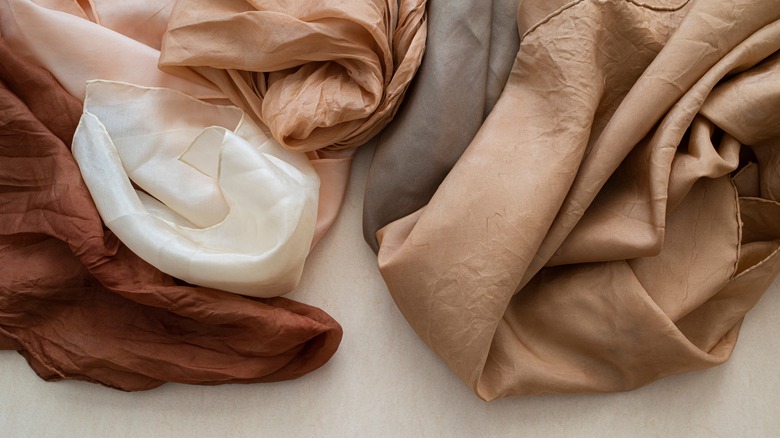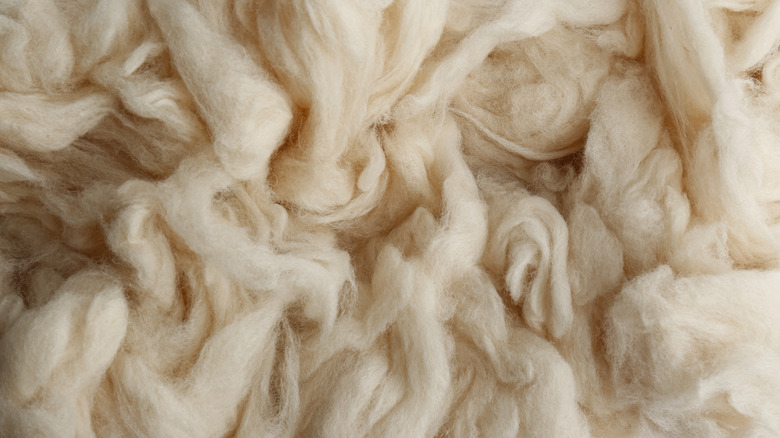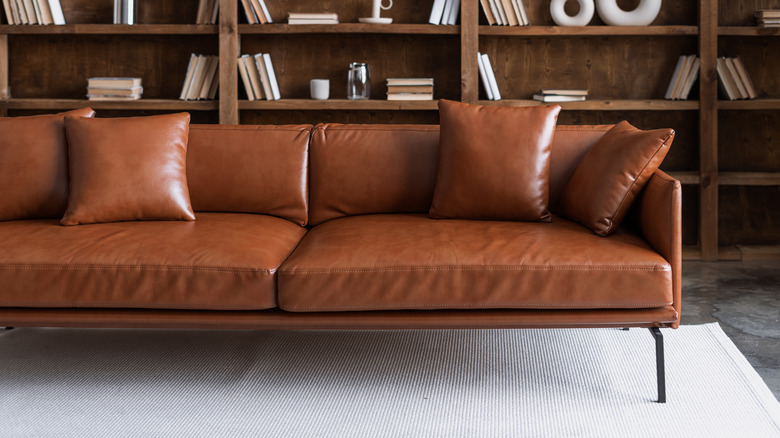Sustainable Fabrics Are Set To Be Everyone's Interior Design Go-To In 2023
Climate change has been a hot topic of discussion for the past couple of years as unprecedented fires, floods, and storms ravage communities all around the world. As a result, many people are attempting to transition to a more eco-friendly lifestyle to mitigate its effects. From changing dietary habits to purchasing electric vehicles and installing solar panels, there are many savvy ways to fight climate change from your house and reduce your carbon footprint.
What about when it comes to interior design? The new year has already introduced a variety of fresh trends, such as natural stone statement pieces, maximalism, cozy tones, and more, per Studio McGee. And those interested in environmentally friendly options will be ecstatic to know that sustainable fabrics are becoming the norm within the world of interior design. We'll break down everything you need to know about this inspiring trend, as well as the expected impact it will have on how we choose to design our homes going forward.
Technological advancements
According to Homes and Gardens, all sorts of sustainable materials are gaining traction as a new trend in 2023. The typical eco-friendly fabrics we're used to seeing are wool, linen, and organic cotton. However, as the interior design industry develops innovative technologies, we can expect to see new types of materials fabricated from recycled items as well as bio-based fabrics, such as leather created from plants. Additionally, these new fabrics will have durability and versatility in mind.
Several other sustainable materials are expected to grow in popularity, such as hemp, per Mindset Eco. Hemp can grow sufficiently without water or pesticides and is biodegradable. Every inch of the plant can be used for production, meaning there will be less waste. Consumers can also expect to see more home items made out of straw. It's an affordable, biodegradable material that can be woven into beautiful and sturdy products. We noticed that it grew in popularity last year when interior designers chose to introduce straw-woven baskets as a stylish storage method.
Fabrics to leave behind
If you're really hoping to gear up on this sustainable fabric trend, then there are a few types of materials you should leave behind. According to Terra Movement, polyester is a synthetic fabric made up of plastic and petroleum. As a result, it's unable to decompose, resulting in hundreds of polyester products sitting in landfills for decades. If you already have a few items made of this material, it's recommended to recycle rather than throw them away.
Another type of material to be wary of is leather. Terra Movement believes using the skin of animals is not only unethical but harmful to the environment due to the tanning and bleaching process leather goes through. They recommend using Piñatex instead — a fabric made from pineapples. Lastly, although bamboo is commonly labeled as eco-friendly, it may not be as sustainable as many think. In order for bamboo to be turned into fabric, it has to go through a harsh production line that releases toxic chemicals. Instead of bamboo, it's recommended to use hemp.


